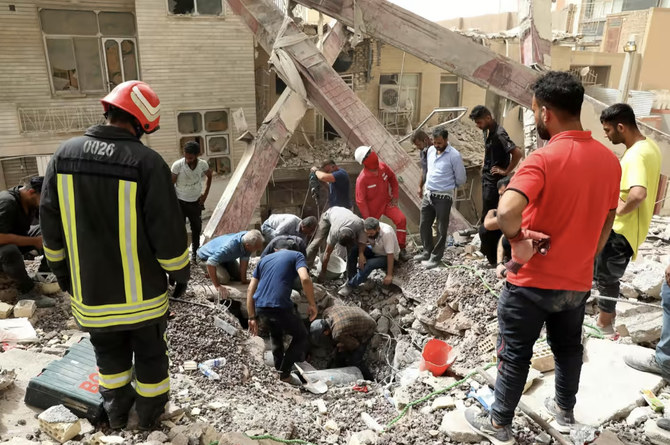
- ARAB NEWS
- 13 Jul 2025

The Iranian regime continues to experience political earthquakes and it is failing to address the underlying issues. Political upheavals are like dam failures. To the casual observer, they appear to happen in an instant. But in actuality, what causes dams — and political systems — to break is years of unaddressed small leaks that create mounting pressure until one final drop causes the entire structure to collapse.
The theocratic establishment of Iran is starting to show some leaks and the West needs to be prepared or it risks getting flooded by surprise. Public distrust in the Iranian government continues to rise. For example, an under-construction 10-story building collapsed in Iran’s southwestern city of Abadan last month. The resulting death toll has risen to 41, with many more injured. The incident was the deadliest of its kind in Iran for years. Authorities are blaming the collapse on individual corruption and lax safety measures and have so far arrested 14 people. The property’s developer, Hossein Abdolbaghi, was one of the victims, according to authorities.
However, locals are deeply suspicious of the official narrative and believe influential backers, likely the regime’s senior leadership, helped Abdolbaghi flee the country to escape their wrath. An Iranian news website, Memar, painted a picture of how officials accumulate wealth in Iran: “His (Abdolbaghi) formula for amassing wealth, like many others in Iran today, is very simple: Clever management of connections and opportunities based on ‘rente’ (privileges resulting from undue influence).”
The belief that Abdolbaghi escaped speaks to the level of anger at the corruption in Iran. This explains why, when Supreme Leader Ali Khamenei sent a cleric to Abadan, he was shouted down as he tried to address mourners near the site of the collapse.
This was not an isolated incident, as the supreme leader and his government have been the targets of slogans and demonstrations across Iran. People have chanted “Death to Khamenei,” “Shame on you Khamenei, step down from power,” “Death to the dictator,” “Death to (President Ebrahim) Raisi,” and “Death to the Iranian regime.”
During his presidential campaign last year, Raisi promised to address the nation’s economic problems and raise people’s living standards. He famously said: “The prices of bread, medicine and petrol will not increase under any circumstances.” But the situations concerning the economy, inflation and unemployment have all deteriorated since he became president. The government last month cut subsidies for eggs, chicken, dairy products and cooking oil, which has sent prices soaring. Overall inflation has now reached nearly 40 percent in Iran.
There is a stark contrast between the wealth being extracted and the high poverty levels among the ordinary people in Iran.
Dr. Majid Rafizadeh
In spite of the resumption of US sanctions on Iran in 2018 after Washington pulled out of the multilateral nuclear deal, many Iranians instead blame the government’s ineptitude and corruption for their growing litany of woes, including high inflation. Chants such as, “They are lying that our enemy is America, our enemy is right here,” can be heard during protests in Iran. That is why economic protests previously erupted across the country and quickly became political. For instance, the province of Khuzestan, where Abadan is located, was the center of anti-regime protests in 2019 that arose due to the rising cost of fuel. They ended in violence, with more than 300 people killed and thousands arrested, according to Amnesty International.
Iran’s biggest oil and gas reserves are in Khuzestan, but it is a frequent site of popular discontent. This is due to the fact that there is a stark contrast between the wealth being extracted and the high poverty levels among the ordinary people in Iran. This manifests the inequality and corruption Iranians face.
While this is not a prediction of Iran’s imminent collapse, leaks are appearing in more places and more frequently across the country. In addition, the recent seizures of foreign tankers and the increasing tensions with Israel point to a more reckless Iran as it faces mounting pressure both internally and externally.
With new reports stating that Iran now has enough enriched uranium to build a nuclear bomb, it is a critical time for the US to increase its support for its partners in the region, which could play a decisive role in spearheading diplomatic efforts to bring Tehran back to the negotiating table. Despite the pessimism around the possibility of a renewed multilateral deal, the worsening economic conditions in Iran and Western support for partners in the region could be the missing pieces needed to solve this jigsaw.
In summary, the West must be prepared for major political upheaval in Iran and it should stand with its regional allies in confronting the Iranian regime.
• Dr. Majid Rafizadeh is a Harvard-educated Iranian-American political scientist.
Twitter: @Dr_Rafizadeh